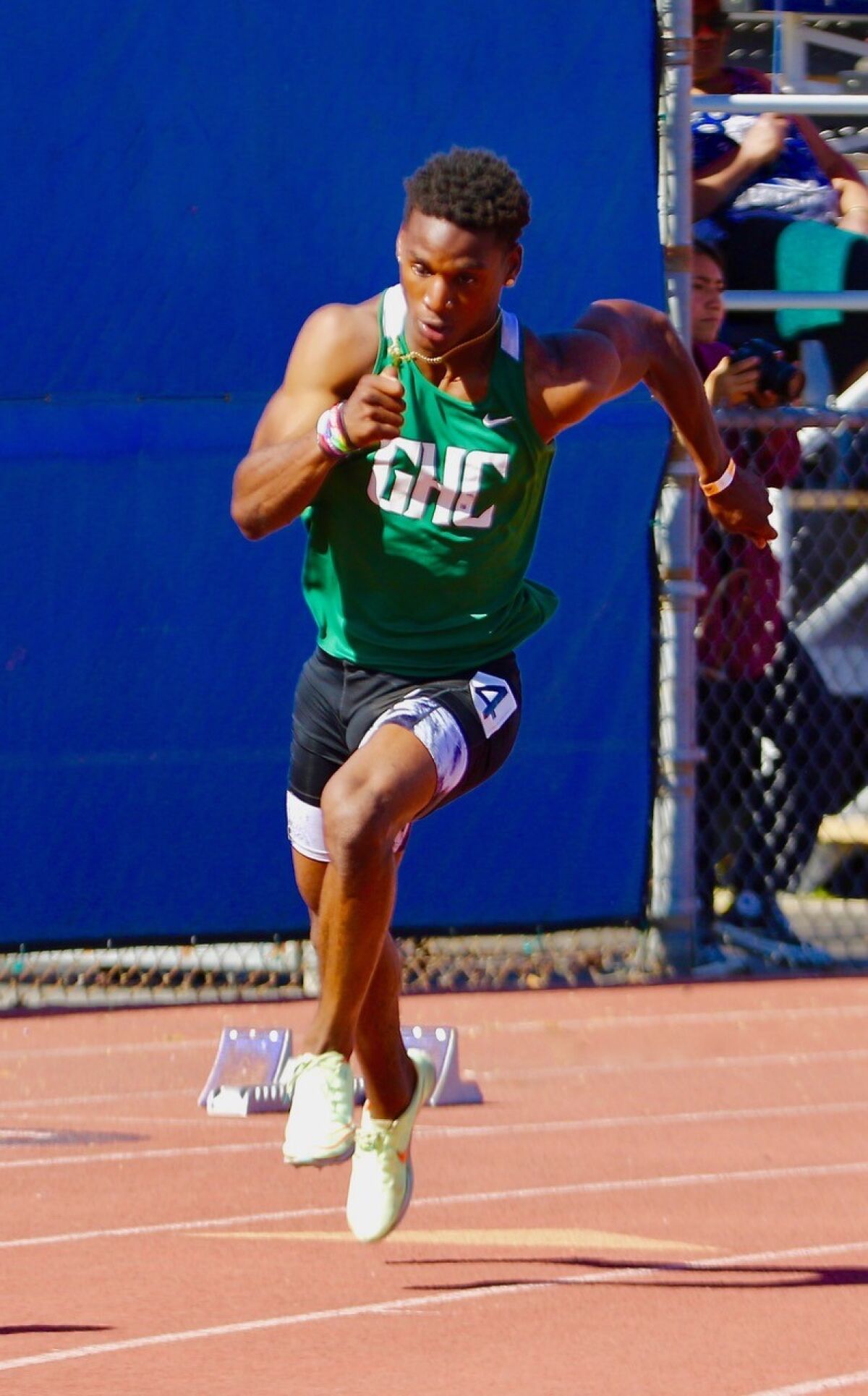The standout sprinters have shaved almost a second off their best times; Coleman in the 100 and 200 meters and Stanley in the 400. This year, Stanley has run a 20.86-second 200, the fastest in the state.
In a dazzling display last month at the Arcadia Invitational, Coleman and Stanley, as the lead and second legs of Granada Hills’ 4×100 relay team, helped the Highlanders match the meet record — 40.28 seconds. It was the third-best high school time this year.
Stanley’s first-place time of 45.92 seconds in the 400 was the second best in meet history. The duo went 1-2 in the 200, with Coleman beating his older teammate for the first time, edging him by a footstep, 21.01 to 21.27.
Coleman and Stanley said they are aiming to add to the legacy of great sprinters from the City Section.
With the state finals later this month, Coleman said putting the City back on the map is important.
“For us to be able to come here and be local in the City Section, that says a lot. It shows how the City still has a lot of potential and a lot of people who represent it well,” Coleman said.
Stanley attended Grace Brethren in Simi Valley his freshman year before coming to Granada Hills.
“I believed it was a better opportunity, even though I lived right here. I made the decision to come [back] to this school, and it was probably the best decision I ever made,” Stanley said.
Granada Hills coach Johnny Wiley said year-round training and skill development have helped Coleman, Stanley and other teammates improve their times.
“It’s remarkable but not rare,” Wiley said of his team’s rising profile.
Coleman believes it’s the “quick twitch” in his feet, taught by assistant coach Terrell Stanley, that helped him drop eight-tenths of a second off his time in the 200. The senior Stanley, Dijon’s father, ran track at nearby San Fernando High.
(Steve Galluzzo / For The Times)
Coleman and Dijon Stanley were raised in Granada Hills, one of several suburban communities abutting the hillsides of the San Fernando Valley. Granada Hills High is as far as about 30 miles north of legendary City Section schools such as Crenshaw, Dorsey, Taft and Jefferson, but it can seem even farther.
Those crosstown campuses produced great sprinters in the 1980s and 1990s but not so much lately because of changing demographics, including students enrolling in charter schools.
There is a bit of nostalgia in the idea of students staying at their neighborhood school. Since open enrollment gained traction in the late 1990s, athletes are not bound to attend school in their immediate area.
Yet Dijon Stanley talks about a kinship to those schools.
“Back in the day, kids were going to their home school,” he said. “I feel like it’s not the same now. It’s not homegrown.”
Staying “homegrown” has been a boon for Coleman and Stanley. Both have parents who were track athletes and siblings who run locally, so the sport might have seeped into their DNA.
The City finals May 18 at El Camino College will be their next chance to elevate their individual names and the City Section. The state meet, should they qualify, will be their last chance to show the City Section’s strength.
Stanley graduates in June. He is committed to play football at Utah. If it’s a fit, he says he will also run track for the Utes.
Newsletter
Get our high school sports newsletter
Prep Rally is devoted to the SoCal high school sports experience, bringing you scores, stories and a behind-the-scenes look at what makes prep sports so popular.
You may occasionally receive promotional content from the Los Angeles Times.
Coleman, a junior, is looking forward to one more year representing the City Section.
Wiley said athletes of their caliber can impact an entire team.
“Other kids follow when they see their peers in action, and not only in action, but they’ve had a lot of success,” Wiley said. “That’s a dream come true for me as a coach.”
